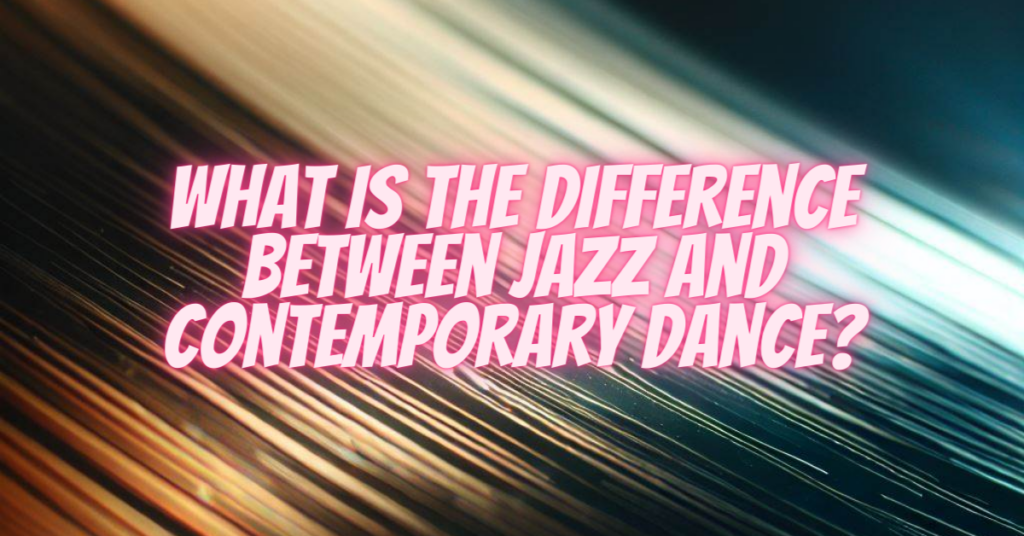Dance is a universal language, spoken and understood across cultures and boundaries. Within the world of dance, various styles and genres offer unique expressions of movement and emotion. Two such prominent styles are jazz dance and contemporary dance. Although both are forms of artistic expression, they possess distinct characteristics, histories, and techniques. In this article, we will delve into the differences between jazz and contemporary dance, shedding light on their individual traits and the artistic landscapes they explore.
1. Historical Roots:
Jazz dance originated in the African-American communities during the late 19th and early 20th centuries. It has deep roots in African and Caribbean dance traditions and was significantly influenced by the jazz music of the time. Jazz dance often reflects the exuberance and energy of jazz music, incorporating syncopated rhythms, improvisation, and lively movements.
Contemporary dance, on the other hand, emerged in the mid-20th century as a reaction against the structured forms of classical ballet. It incorporates elements from various dance styles, including modern dance, post-modern dance, and even elements of jazz. Contemporary dance emphasizes freedom of movement, fluidity, and the exploration of new and innovative choreographic concepts.
2. Movement Style and Technique:
Jazz dance is characterized by its sharp, stylized movements, quick footwork, and dynamic isolation. It often includes elements of theatricality, allowing dancers to convey narratives and emotions through their movements. Jazz dance also incorporates popular dance styles, making it versatile and adaptable to different music genres.
Contemporary dance, in contrast, emphasizes natural movements, fluidity, and expressiveness. Dancers in contemporary performances often explore the full range of motion, incorporating floor work, sustained movements, and unpredictable changes in rhythm and direction. Contemporary dance encourages dancers to connect with their emotions and experiment with the boundaries of traditional movement vocabulary.
3. Choreographic Approach:
Jazz dance choreography is often structured and follows specific techniques and patterns. While there is room for improvisation, jazz dance routines frequently have predetermined steps and sequences, especially in the context of musical theater or commercial performances. Jazz dance pieces can be high-energy and upbeat, capturing the lively spirit of jazz music.
Contemporary dance choreography, on the other hand, is characterized by its artistic freedom and creativity. Choreographers in contemporary dance often explore abstract concepts, emotions, and themes. Movements are shaped by the dancer’s interpretation of the music and the choreographer’s vision, allowing for a wide range of interpretations and styles within contemporary dance performances.
4. Costuming and Performance Setting:
Jazz dance performances often feature vibrant, flashy costumes that complement the energetic nature of the movements. Sequins, bold colors, and unique designs are common in jazz dance attire. Jazz dance routines are frequently staged in settings that match the themes of the performance, such as nightclubs, musical stages, or urban environments.
Contemporary dance performances, on the other hand, may feature minimalist and understated costumes that allow the focus to remain on the dancers’ movements and expressions. The performance settings for contemporary dance pieces can vary widely, from traditional stages to unconventional spaces, and the atmosphere often contributes to the overall mood and tone of the choreography.
Conclusion
Jazz dance and contemporary dance are distinct yet interconnected styles that reflect the ever-evolving nature of dance as an art form. While jazz dance embodies the spirit of jazz music with its lively movements and structured choreography, contemporary dance embraces artistic freedom, allowing dancers and choreographers to explore the depths of human emotions and movement possibilities. Both styles offer unique avenues for self-expression and creativity, enriching the world of dance with their diverse techniques, styles, and narratives. Whether it’s the infectious rhythm of jazz or the profound emotive quality of contemporary dance, both genres continue to captivate audiences and inspire dancers around the globe.


